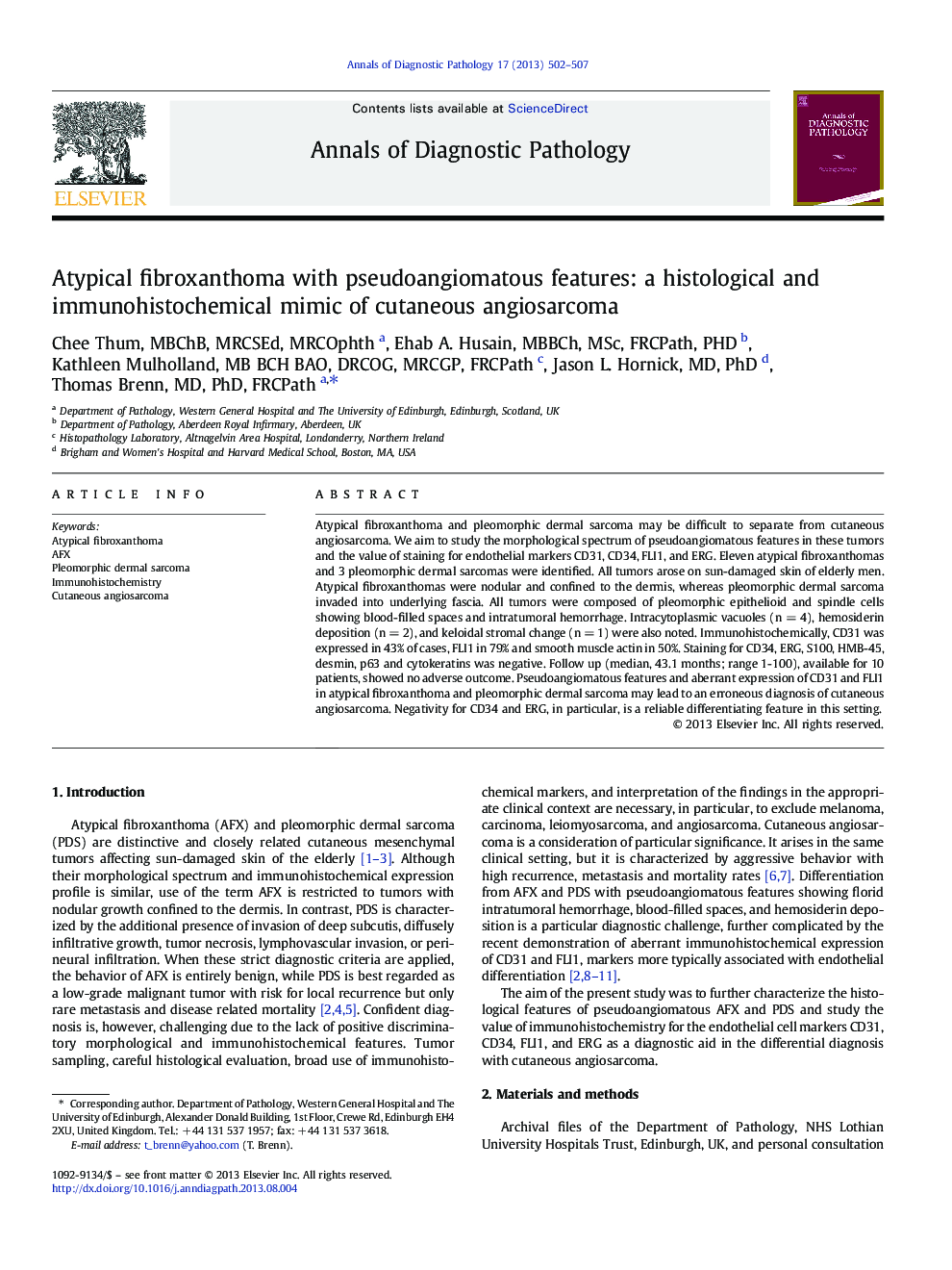| Article ID | Journal | Published Year | Pages | File Type |
|---|---|---|---|---|
| 6215068 | Annals of Diagnostic Pathology | 2013 | 6 Pages |
Atypical fibroxanthoma and pleomorphic dermal sarcoma may be difficult to separate from cutaneous angiosarcoma. We aim to study the morphological spectrum of pseudoangiomatous features in these tumors and the value of staining for endothelial markers CD31, CD34, FLI1, and ERG. Eleven atypical fibroxanthomas and 3 pleomorphic dermal sarcomas were identified. All tumors arose on sun-damaged skin of elderly men. Atypical fibroxanthomas were nodular and confined to the dermis, whereas pleomorphic dermal sarcoma invaded into underlying fascia. All tumors were composed of pleomorphic epithelioid and spindle cells showing blood-filled spaces and intratumoral hemorrhage. Intracytoplasmic vacuoles (n = 4), hemosiderin deposition (n = 2), and keloidal stromal change (n = 1) were also noted. Immunohistochemically, CD31 was expressed in 43% of cases, FLI1 in 79% and smooth muscle actin in 50%. Staining for CD34, ERG, S100, HMB-45, desmin, p63 and cytokeratins was negative. Follow up (median, 43.1 months; range 1-100), available for 10 patients, showed no adverse outcome. Pseudoangiomatous features and aberrant expression of CD31 and FLI1 in atypical fibroxanthoma and pleomorphic dermal sarcoma may lead to an erroneous diagnosis of cutaneous angiosarcoma. Negativity for CD34 and ERG, in particular, is a reliable differentiating feature in this setting.
